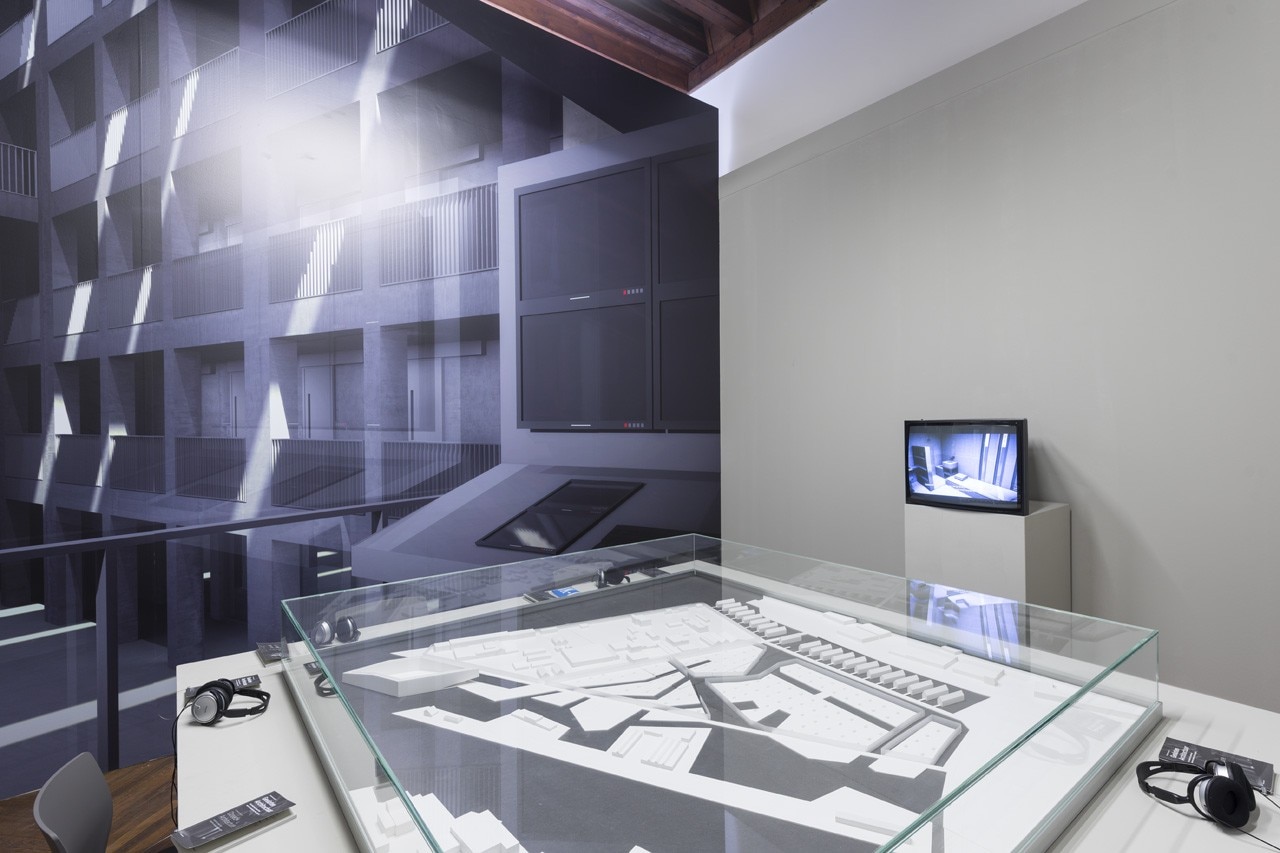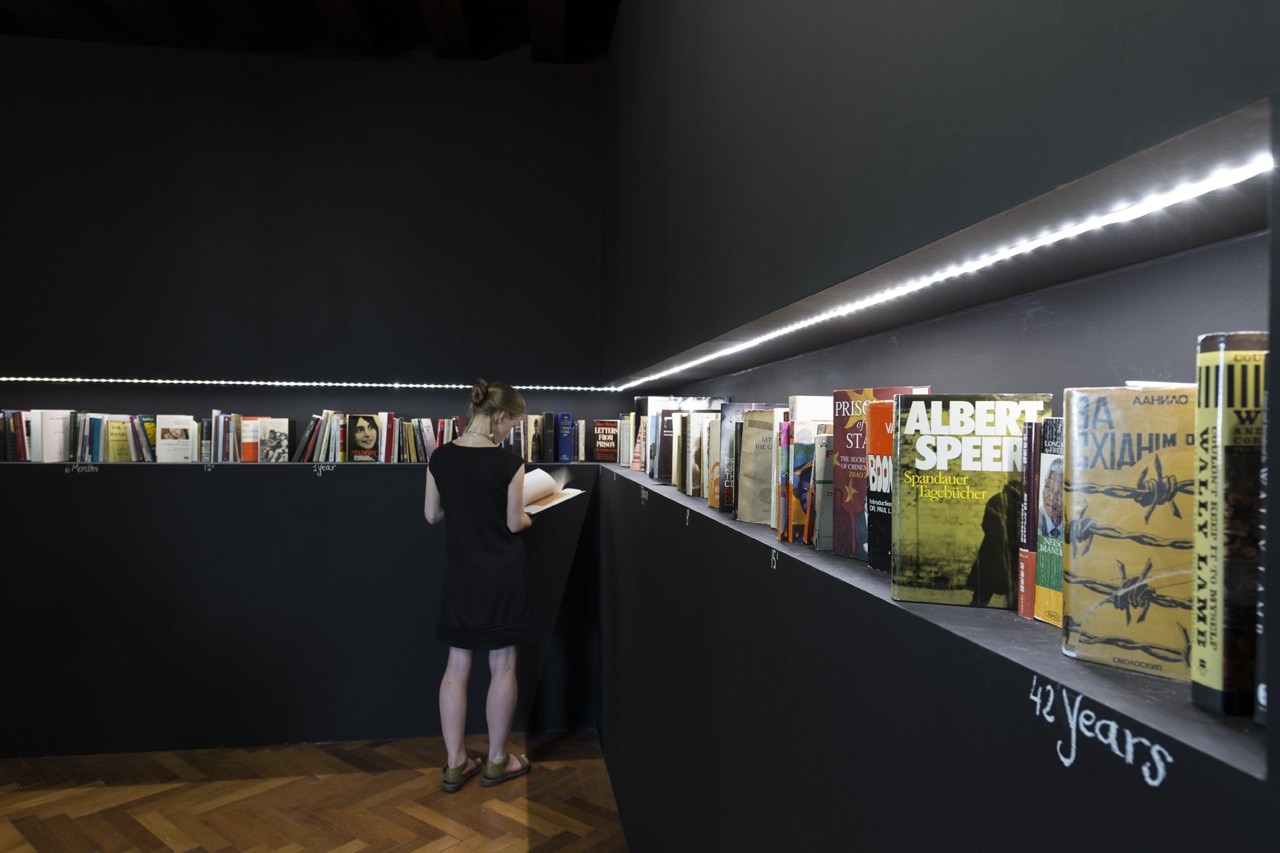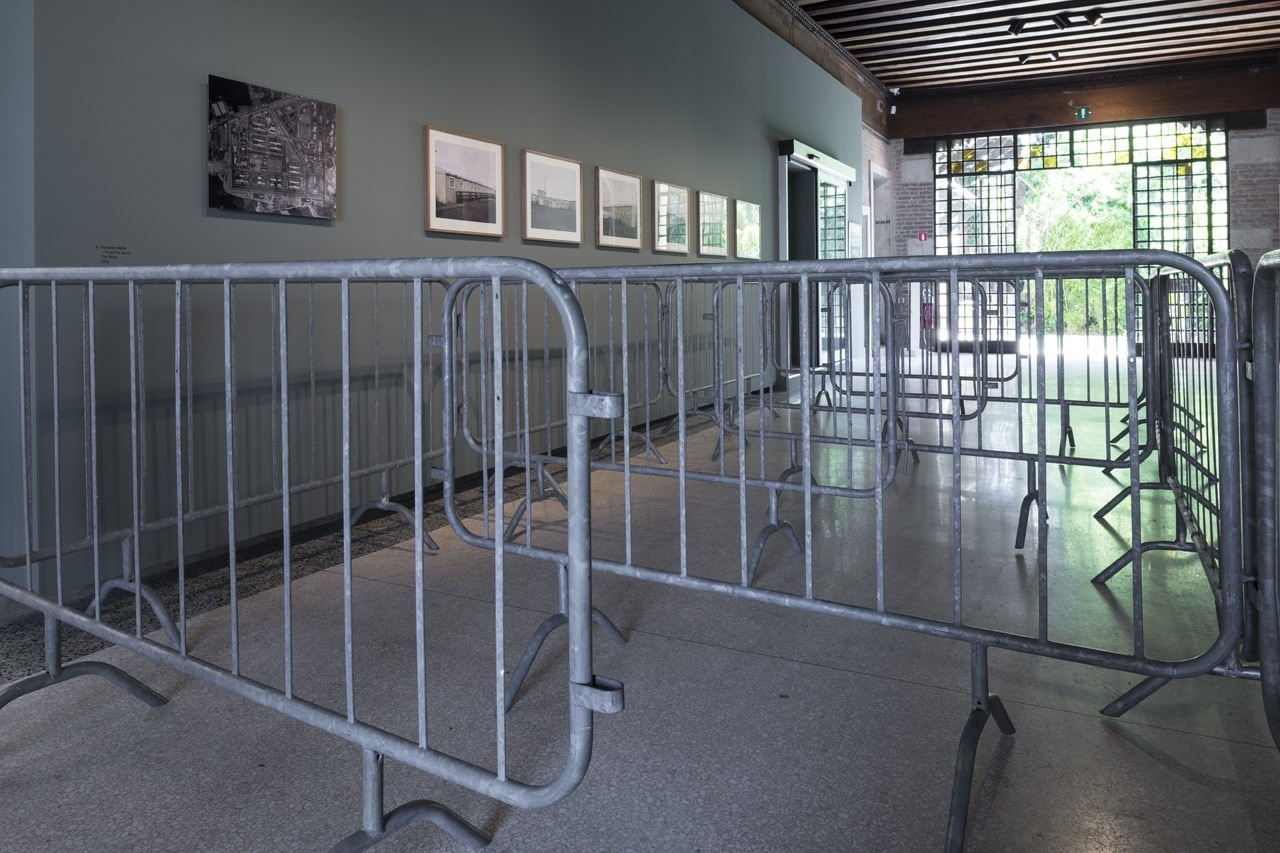
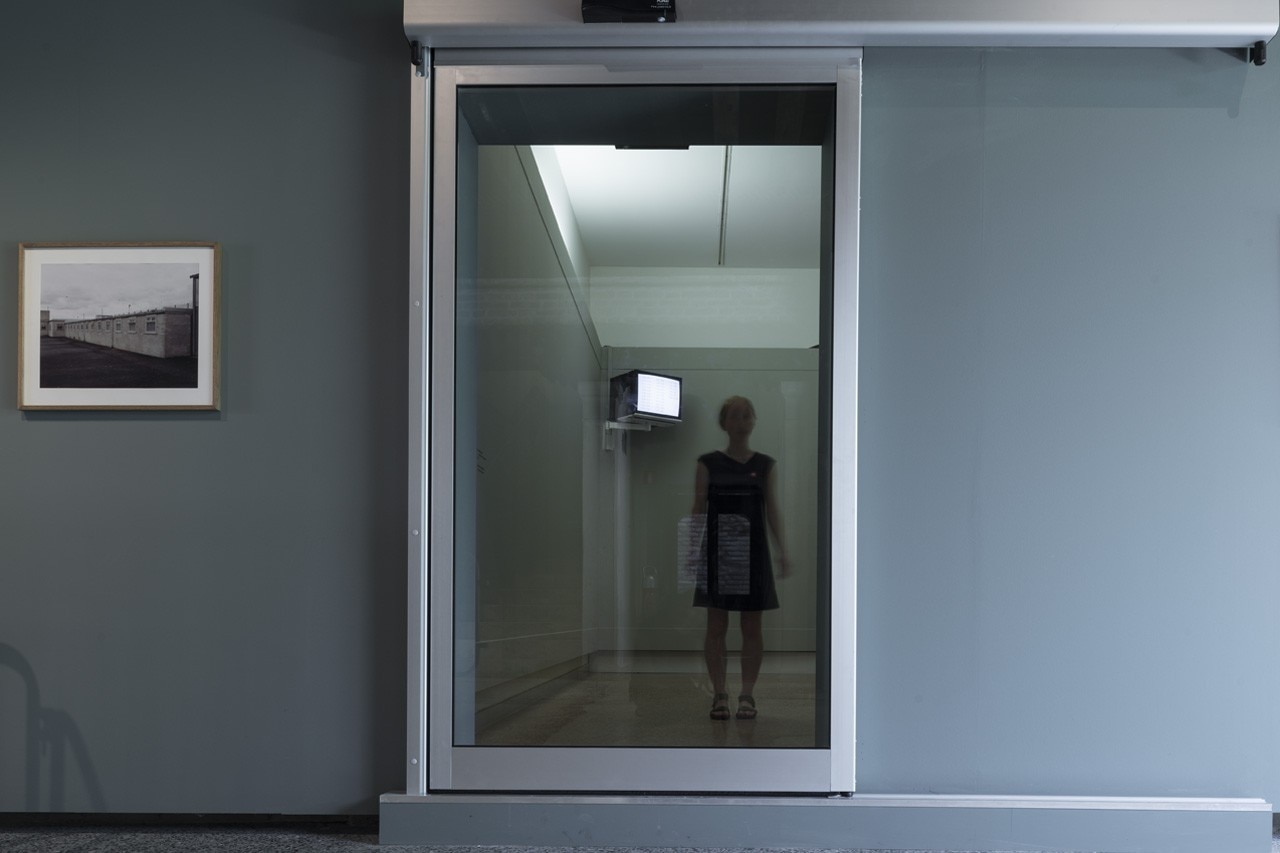
The exhibition starts with a focus on the physical and bodily experience of detention. The visitors’ entry to the exhibition is immediately impeded by a David Ter Oganian work in the form of the metal barriers adopted to channel and control crowds installed in the central corridor. Visitors to Valentin Fetisov’s room find themselves locked in for a few seconds and the tension rises as they try to find a way out and a hypothetical liberation.
As in the Koolhaas format, dance is present via the work of choreographer Rebecca Lazier, who has built a spectacle based on the almost ritual repetition of movements inspired by the violent 1970s’ revolt in the Attica Correctional Facility (New York).
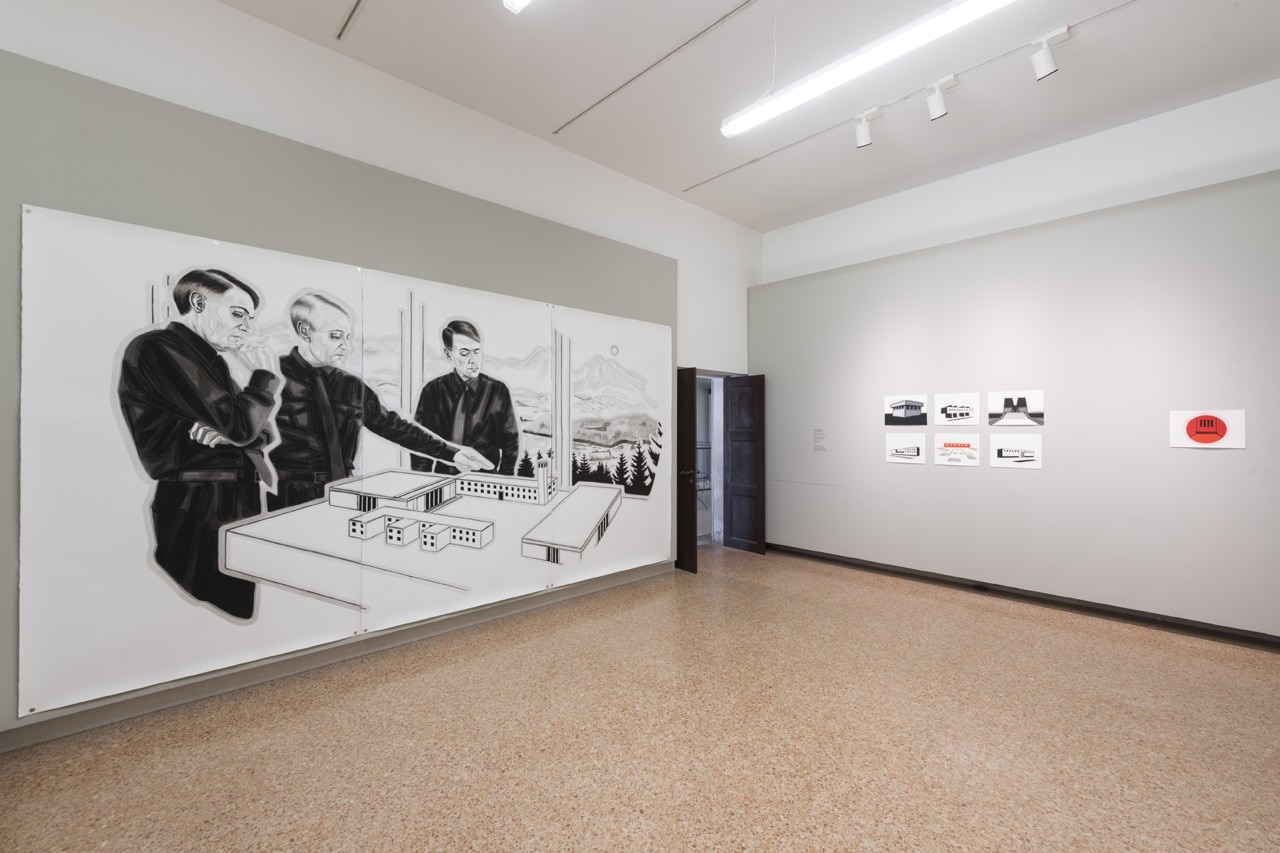
The second floor is given over to the visual, social and architectural construction of the prison and opens with Harun Farouocki’s film Prison Images, a reflection on the surveillance devices that demystify the inner parts of segregated prison spaces. Jonas Staal has produced a 3D model of the prison in the architecture thesis of Fleur Agema, a member of the Dutch far-right Party for Freedom; this shows how, depending on its political manipulation, architecture can be turned into an implement of torture and thus compacts the critical theory of a disciplinary society into a manual for the construction of dystopia.
The Urban Fauna Lab research team presents an installation comprising a model and a presentation video miming the logic of the local development projects undertaken by Stalin to colonise Siberian Russia via the forced labour of Gulag prisoners – shining a light on the future development of data-company control centres located in the perennially frozen tundra.
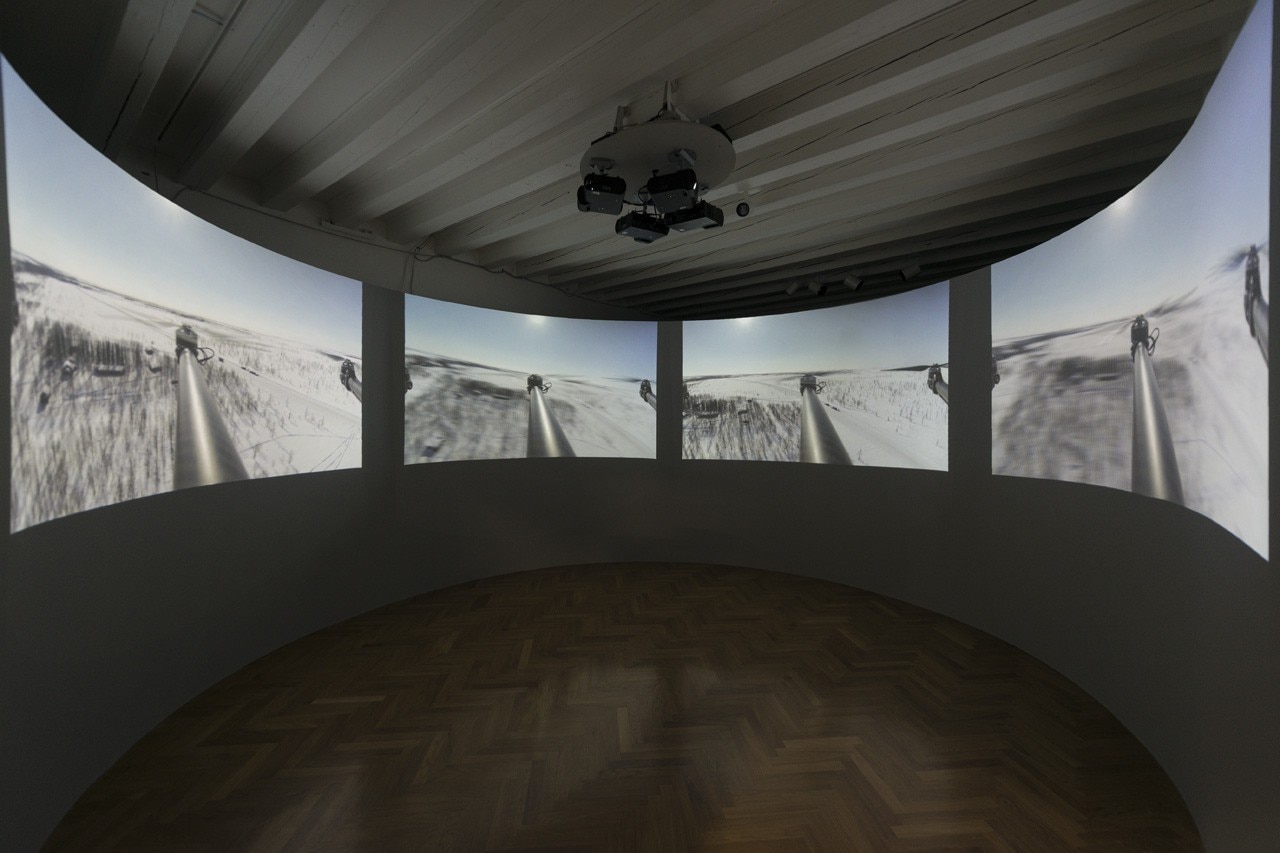
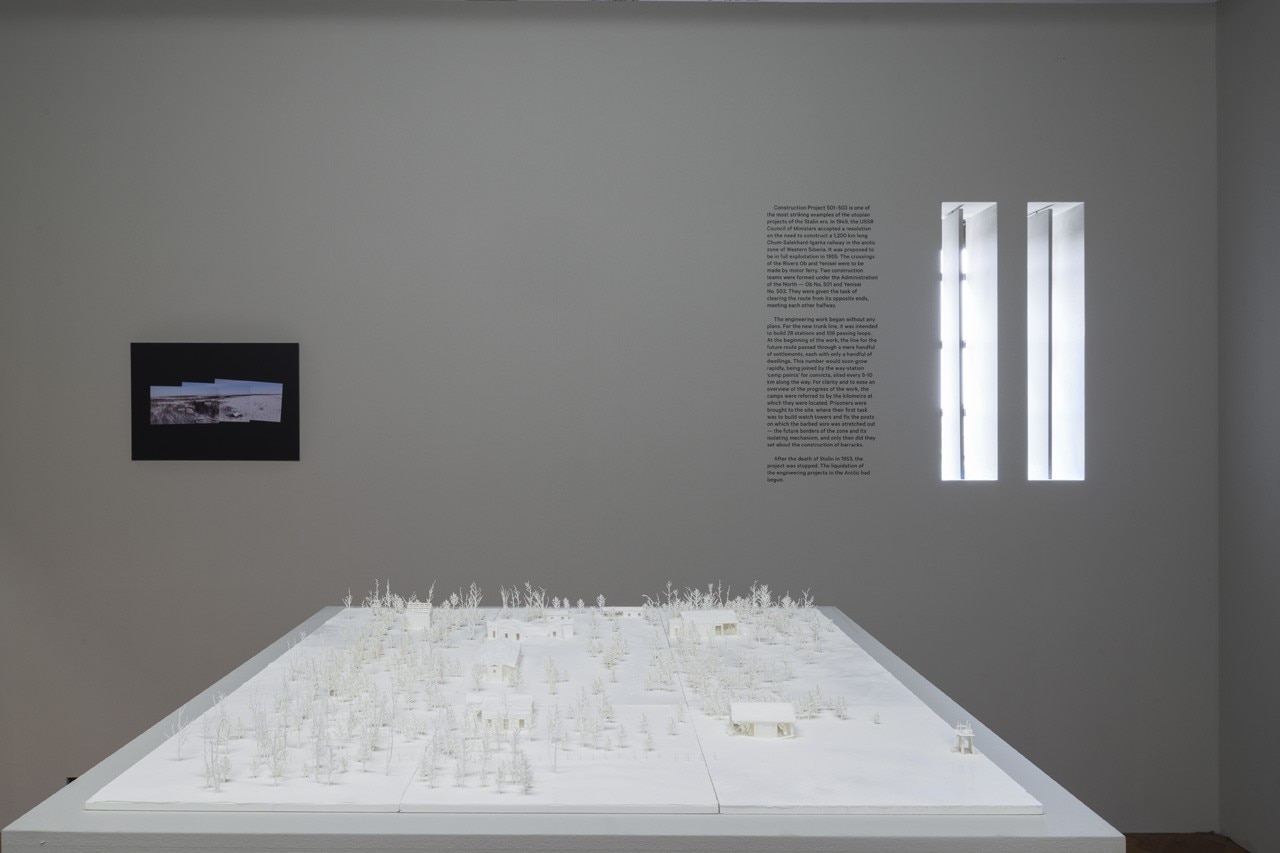
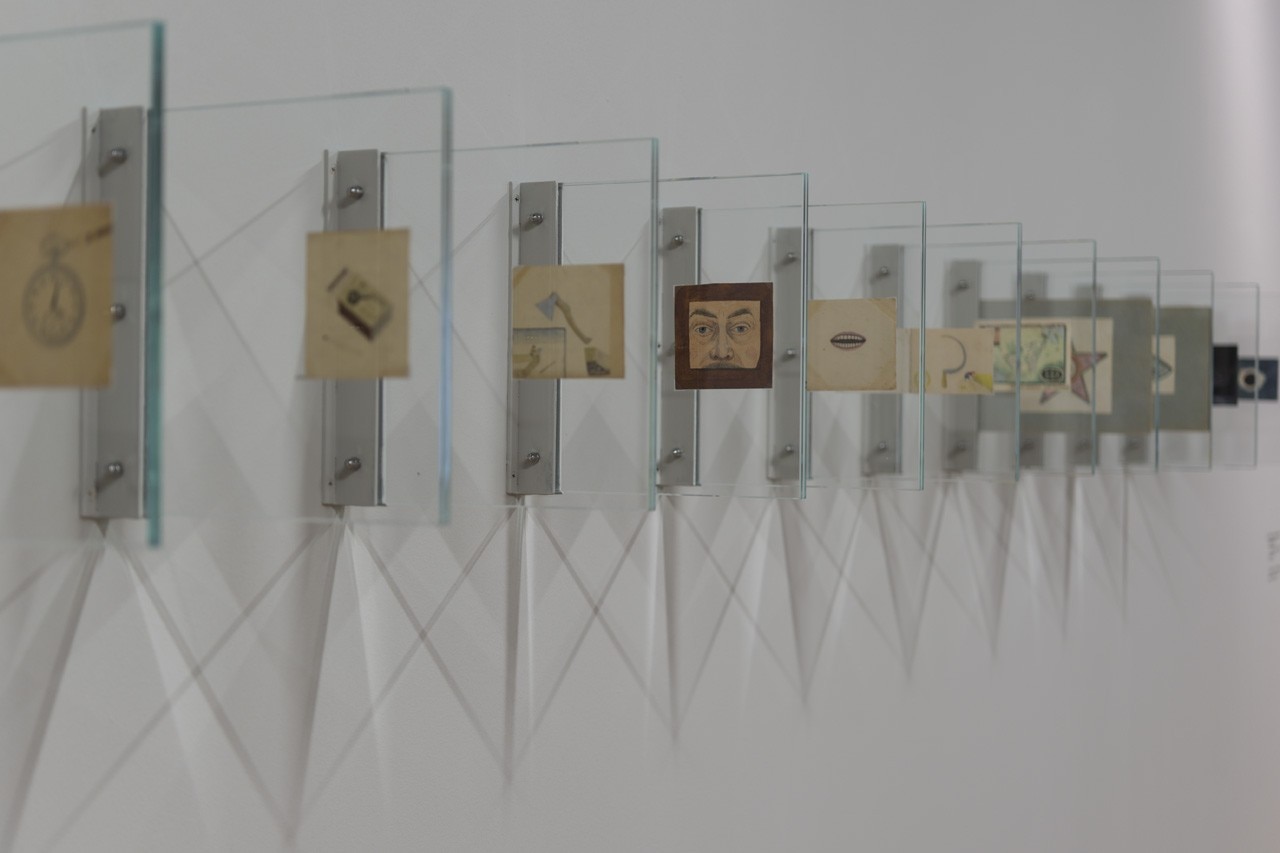
until 24 August 2014
IK-00 The spaces of confinement
curated by: Katerina Chuchalina
Casa dei Tre Oci
Fondamenta delle Zitelle, 43
Isola della Giudecca, Venice
